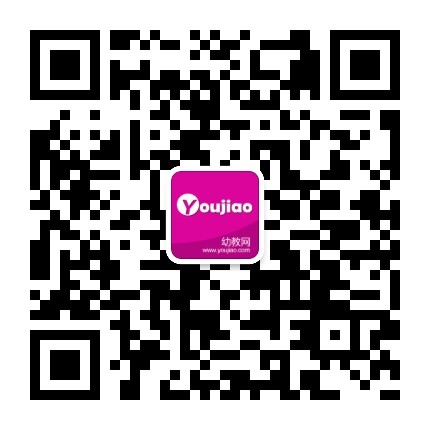ĪĪĪĪėūĮ╠ŠWš¹└Ē┴╦ĻPė┌2018─Ļ£¹Į╠░µ╦──Ļ╝ēėóšZ╔ŽāįĪČHello againĪĘĮ╠░ĖįOėŗŻ¼ŽŻ═¹ī”Į╠ĤĮ╠īWėą╦∙Ä═ų·Ż¼āH╣®ģó┐╝ĪŻ
ĪĪĪĪĮ╠īWā╚╚▌Ż║
ĪĪĪĪLook and say & Ask and answer
ĪĪĪĪĮ╠īW─┐ś╦Ż║
ĪĪĪĪ1.Basic aims:
ĪĪĪĪa. Using verbs to describe actions. e.g. paint, read
ĪĪĪĪb. Using interrogatives to ask ‘yes/no’ -questions to obtain simple responses. e.g. Can you swim?
ĪĪĪĪc. Using modals to talk about ability. e.g. Yes, I can. / No, I can’t.
ĪĪĪĪ2 .Developing aims:
ĪĪĪĪa. Asking about ability.
ĪĪĪĪb. Do a survey in class.
ĪĪĪĪ3.Education aims:
ĪĪĪĪTalking about ability to establish friendly relations with your classmates.
ĪĪĪĪĮ╠īW£╩éõŻ║
ĪĪĪĪpictures, word cards, cassette player,
ĪĪĪĪĮ╠īW▀^│╠Ż║
ĪĪĪĪę╗ĪóWarming-up
ĪĪĪĪ1. Song
ĪĪĪĪ2. Responding to simple instructions e.g. Sing a song. Draw a circle. Pre-task
ĪĪĪĪČ■�����Īópreparation
ĪĪĪĪ1. Revision Invite individual students to come
ĪĪĪĪ2.Presentation to the board and choose a Picture Card and mime whether they can do or can’t do a particular action.
ĪĪĪĪThe rest of the class say: He/She can/can’t… Invite individual students to stand up.
ĪĪĪĪPoint to the pictures and ask: Can you …�����Ż┐
ĪĪĪĪAnd prompt them to use: Yes, I can. /No, I can’t. to answer your questions.
ĪĪĪĪ╚²�����ĪóWhile-task procedure
ĪĪĪ�����ĪŻ©1Ż® Introduce: paint
ĪĪĪĪ1. Introduce: paint by miming a painting action, and then stick the Word and Picture Cards on the board.
ĪĪĪĪ2. Read the word with action.
ĪĪĪĪ3. Ask individual students: Can you paint? to elicit: Yes, I can./No, I can’t,
ĪĪĪĪ4. Ask and answer in pairs.
ĪĪĪ�����ĪŻ©2Ż®Introduce: read
ĪĪĪĪ1. Draw a picture on the board. Ask: What can she do? to elicit: She can read.
ĪĪĪĪ2. Read the word in different voices.
ĪĪĪĪ3. Ask individual students: Can you read? What can you read? to elicit: I can read English/a story.
ĪĪĪ�����ĪŻ©3Ż® Listen and say
ĪĪĪĪ1. Play the cassette: Look and say. Students listen.
ĪĪĪĪ2. Play the cassette again. The students follow in their books and, in groups of four, practice the dialogue.
ĪĪĪĪ3. Invite individuals to read the dialogue to the class.
ĪĪĪĪ╦─ĪóPost-task activities
ĪĪĪ�����ĪŻ©1Ż®Production
ĪĪĪĪ1. Show a photo album. Tell students that it is your album. Encourage them to ask about your photograph using ‘Can you …Ż┐’ 2. Students work in pairs using the pictures in Ask and answer to find out what their partner can and cannot do.
ĪĪĪĪ3. Do a survey: Ask students to walk around the class and interview three to five classmates. Students are to find their classmates who can or cannot do a certain thing. Invite individual students to report back to the class.
ĪĪĪ�����ĪŻ©2Ż®Assignment
ĪĪĪĪ1. Complete Workbook page two.
ĪĪĪĪ2. Write about your ability using ‘I can…’
ĪĪĪĪŽÓĻP═Ų╦]Ż║
ąĪ╔²│§įćŅ}�����ĪóŲ┌ųąŲ┌─®Ņ}�����ĪóąĪīWŖWöĄŅ}
▒Mį┌ŖWöĄŠW╣½▒Ŗ╠¢

ĪĪĪĪ ÜgėŁ╩╣ė├╩ųÖC�����ĪóŲĮ░ÕĄ╚ęŲäėįOéõįLå¢ėūĮ╠ŠW�����Ż¼ėūā║Į╠ė²╬ęéāę╗┬Ę┼Ń░ķ═¼ąą�����ŻĪ>>³cō¶▓ķ┐┤









